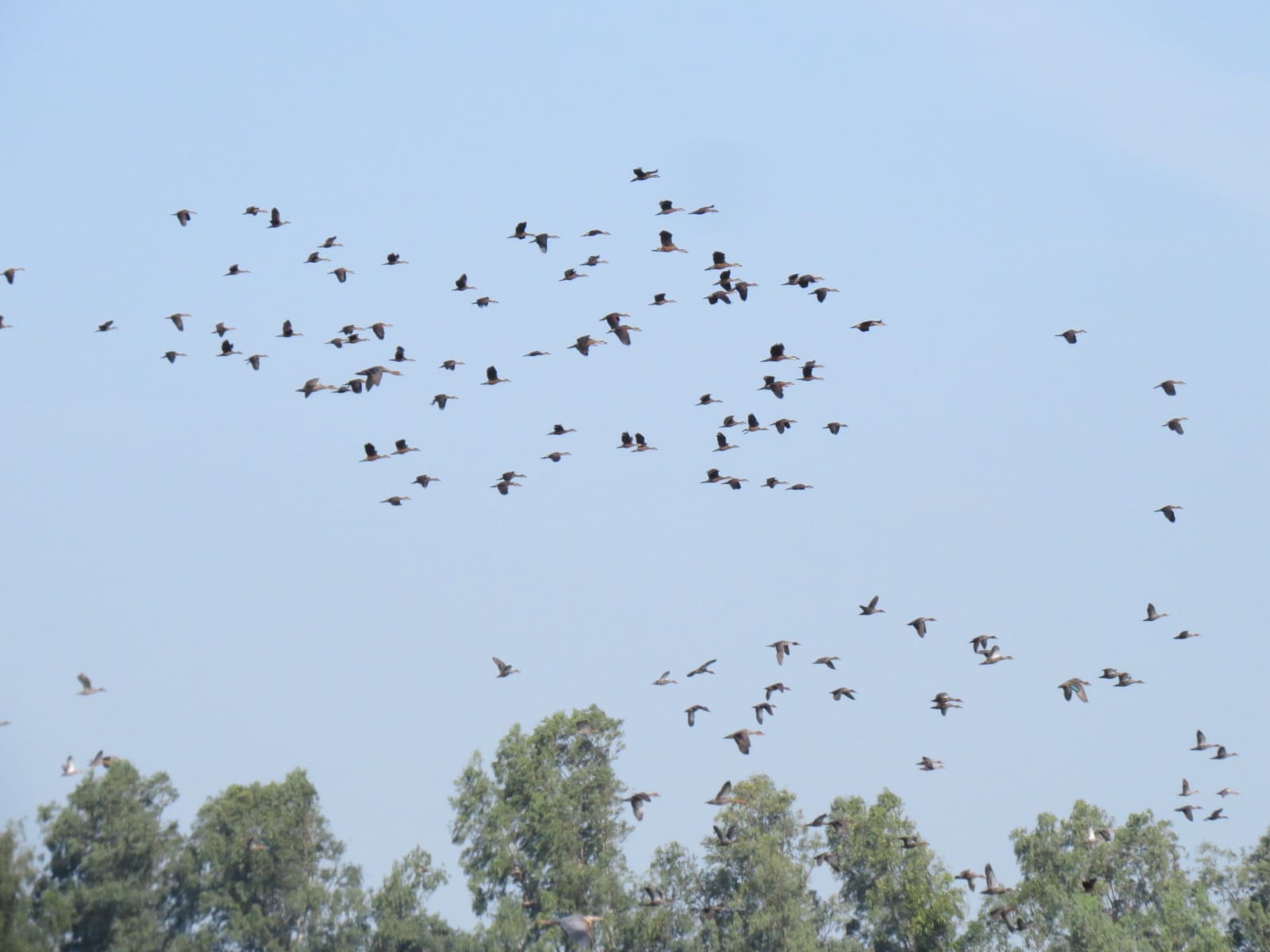by Maia Tanedo
As the year comes to a close, the Philippines finds itself well within the migration season. For birdwatchers, this means going out to enjoy the influx of migratory species and, personally for me, it’s time to go out and see some waders! There are many migratory hotspots throughout the country. In Luzon, there are the Candaba marshes (Pampanga), the Las Pinas Paranaque Critical Habitat and Ecotourism Area (Manila Bay), and the Balanga Wetland Park (Bataan.) All across the Philippines, there are many other wintering rest stops that birds use while journeying southward: Naujan Lake National Park (Mindoro), Olango Island Wildlife Sanctuary (Cebu), Tibsoc mudflats (Negros Occidental), and the Baras Bird Sanctuary (Tacurong City) to name a few.


But before we head out into the field to welcome our seasonal visitors (and maybe get lucky enough to spot a rare migrant or two), let’s talk about what the migration season is really about.
Migration is the regular movement of animals from one area to another due to seasonal change. When the temperatures start to drop in the Northern hemisphere, the landscape starts to change making food and shelter scarce for the wildlife. Numerous bird species fly down south to warmer regions to escape the cold and find feeding grounds during the winter months. Migration usually involves two trips each year: an outward migration (sometimes referred to as the autumn migration) and the return migration (sometimes referred to as spring migration.)


The Philippines finds itself in a very strategic position, lying in the middle of the East-Asia Australasia Flyway. It is one of the three main global flyways in the world that migratory bird species use as they make their way southwards. The other two are the Africa-Eurasia Flyway and the Americas Flyway. West Pacific Flyway and the Central Asian Flyway. But what is a flyway in the first place? A flyway is a geographical region of the world that certain species use as a flight path or route during their migration. Birds, bats, and butterflies use the many migration flyways all over the world.

The Philippines plays host to a number of migratory bird species. Migration season in the Philippines starts as early as July when the first batch of early migrants start arriving in the country. Different migratory species of birds arrive and depart at different times during the migration season. One of the early migrants is the Brown Shrike or tarat. Their arrival heralds the changing seasons and even local farmers note their presence as a sign that the amihan is coming in.

I’ve often wondered how these migratory birds find their way every year. Based on what I’ve read, the mechanisms behind bird migration still remain a mystery but they have been found to use a variety of methods to help navigate as they migrate. Some are known to use the Earth’s magnetic field to orient themselves as they travel. For daytime migrants, they use the sun as a visual compass and for the nighttime migrants, the moon and stars.


Some migratory birds also follow the same route year in and year out. These are tracked by scientists through attaching tracking devices on birds or tagging and ringing. Rings are color-coded and numbered. So, next time you are out wader-watching, keep an eye out for banded birds and report them to the appropriate organization. This way, you are playing the role of citizen scientist and contributing to the data about migratory birds.
Come January, the Asian Waterbird Census (AWC) will commence, which is a citizen science program coordinated by Wetlands International. Every year, the WBCP participates in the counts across the country by volunteering to count and document the many waders in the different AWC count sites. It is part of global waterbird monitoring program to record the population of the waders each year.

I’m gearing up for some AWC activities and I need to start reviewing my wader ID-ing skills already! See you in the field soon!
Read more about the Philippines as a Migratory Flyway in this eBON article featuring the lecture of Godfrey Jakosalem during the 8th Philippine Bird Festival in Negros by clicking HERE.
